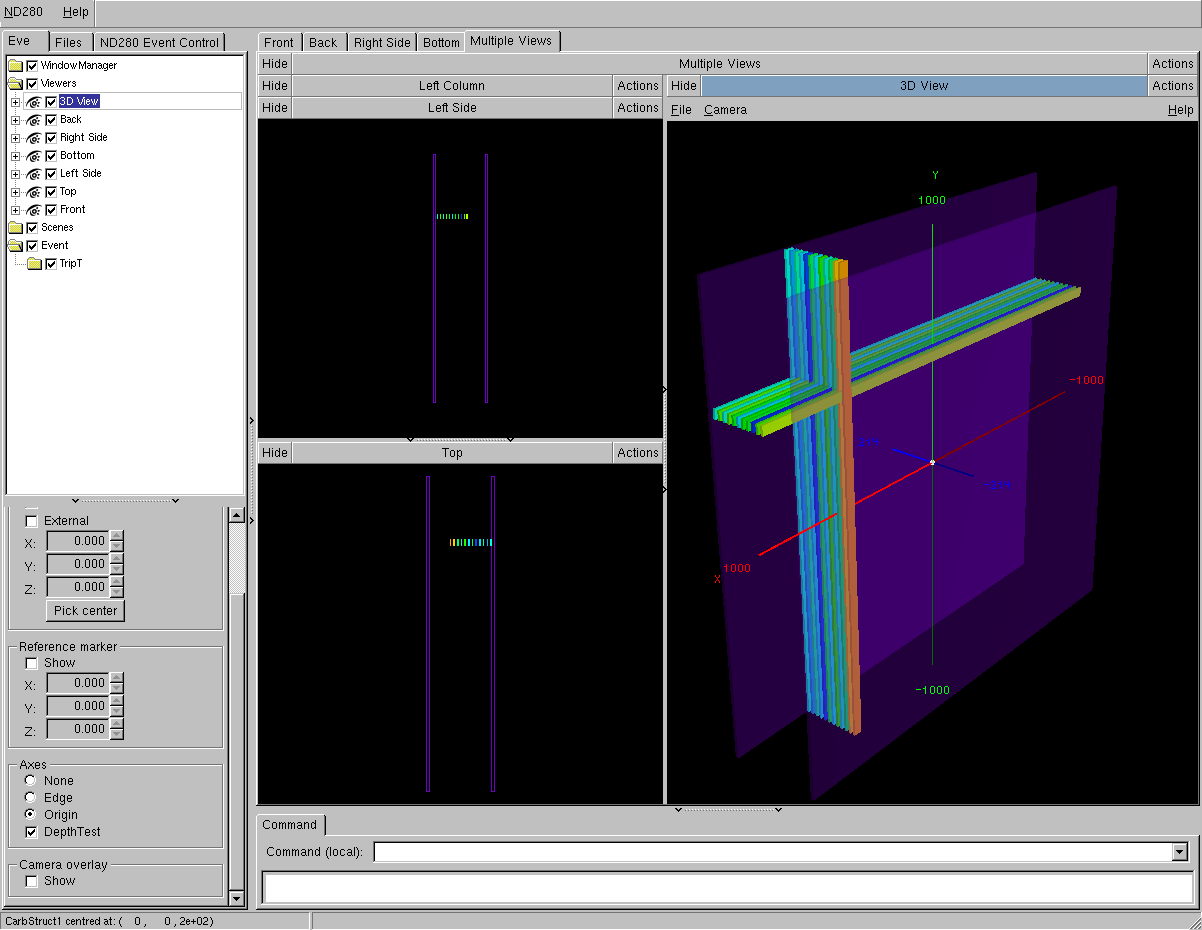#
(This is a publicly-viewable page)
Some Event displays from beam running
Two easy events
First of all to get your eye in, the simplest of the simple: a paricle going straight through the centre. The way i have arranged things here has
- Left upper panel
- View from the side of the DsECal, (as you would see it from the counting room if the shield wasn't there)
- Left lower panel
- View from above the detector
- Right panel
- 3D display, generally looking from the same side as the Left lower pannel
In all plots the beam goes from right to left, although in this one you'd be hard pressed to tell
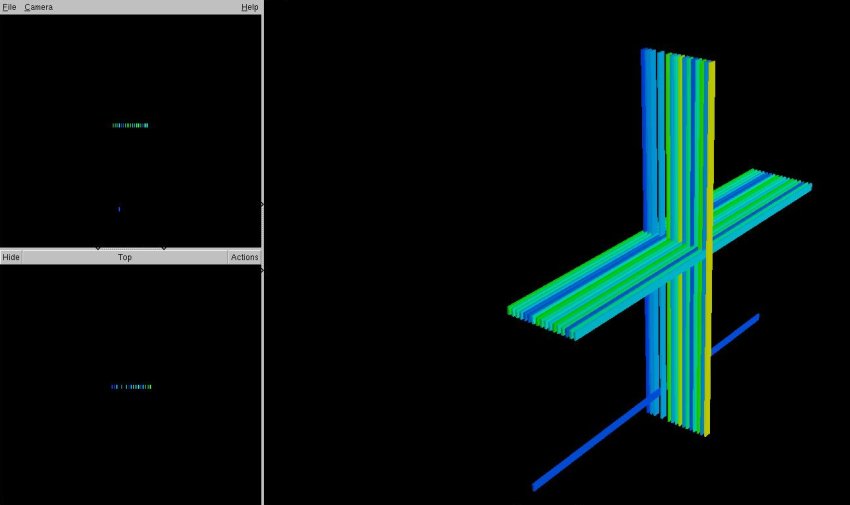
In this second event particle enters perpendicular to the scintillator planes, but undergoes a large scatter about half way through and continues in a slightly upward direction. 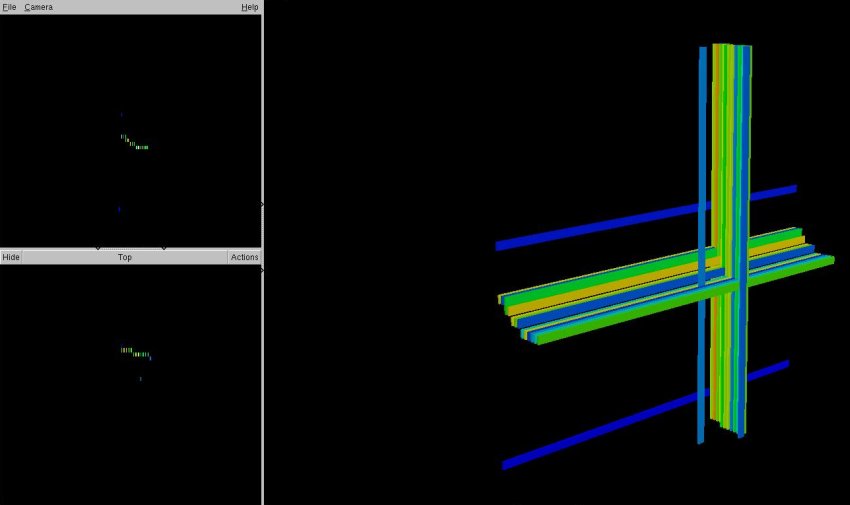
Cosmic Rays
Cosmic rays are an interesting case. The are generally easy to understand as they normally consist of a single muon track. But they come in at quite high angles to the scintillator planes. THe firt of these is a pretty easy cosmic.
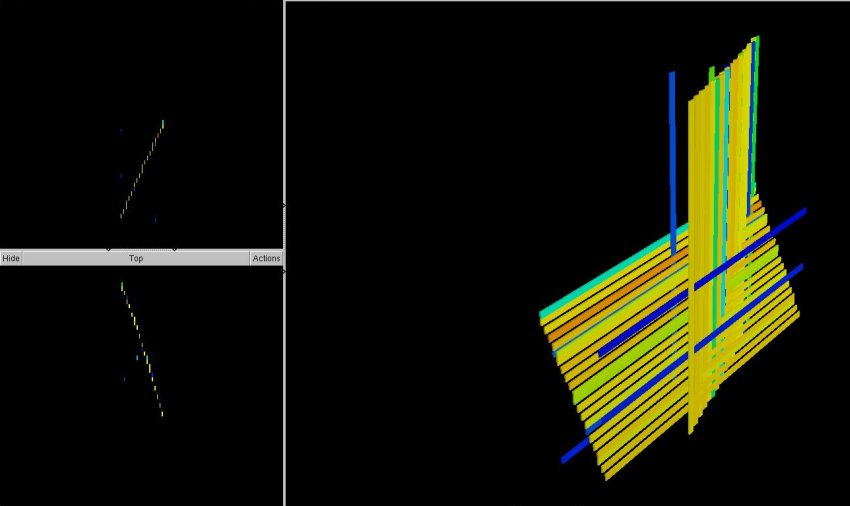
The second is similar, but the muon escapes out the bottom of the detector so does not hill every layer.
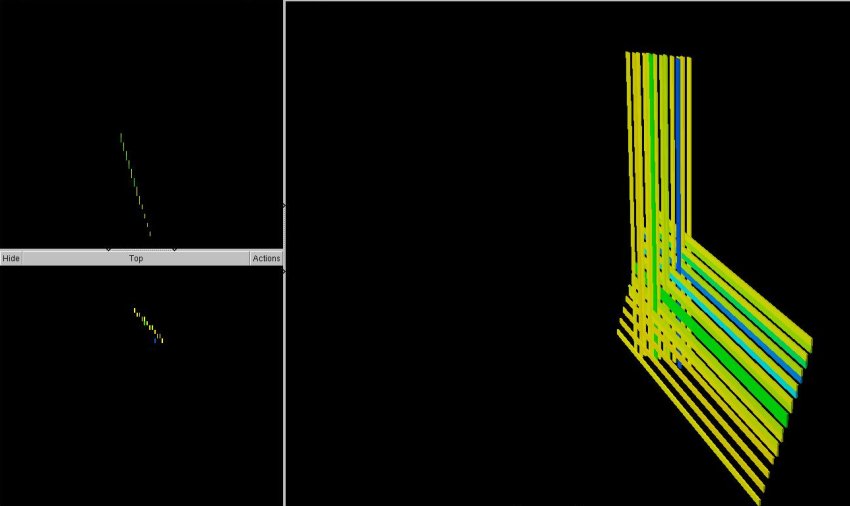
The next two cases are rather more pathological. In the first the cosmic is traveling quite steeply and can cross 3 strips in a single plane in the YZ view.
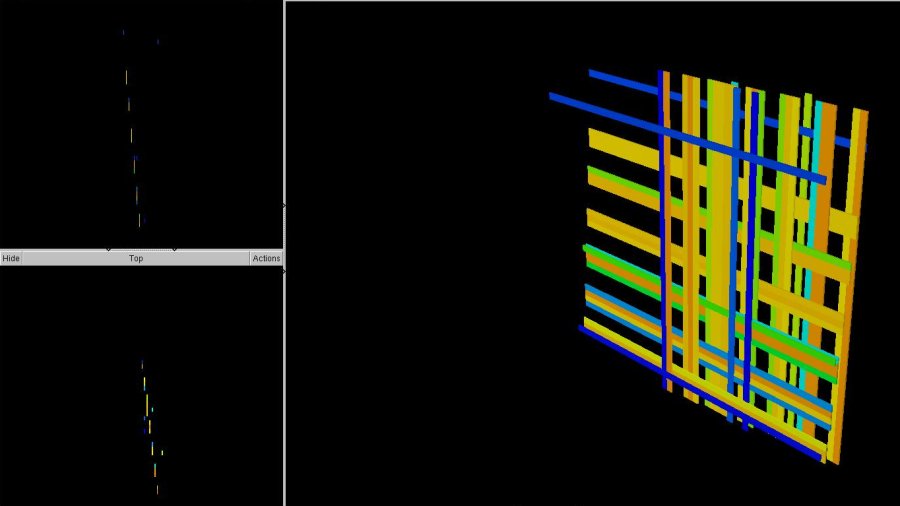
This cosmic is really steep. It only crosses 5 planes and it is difficult to tell if it stopped in the detector or escaped without hitting any more planes. Notice that the high angle means that strips in two successive planes are a long way apart.
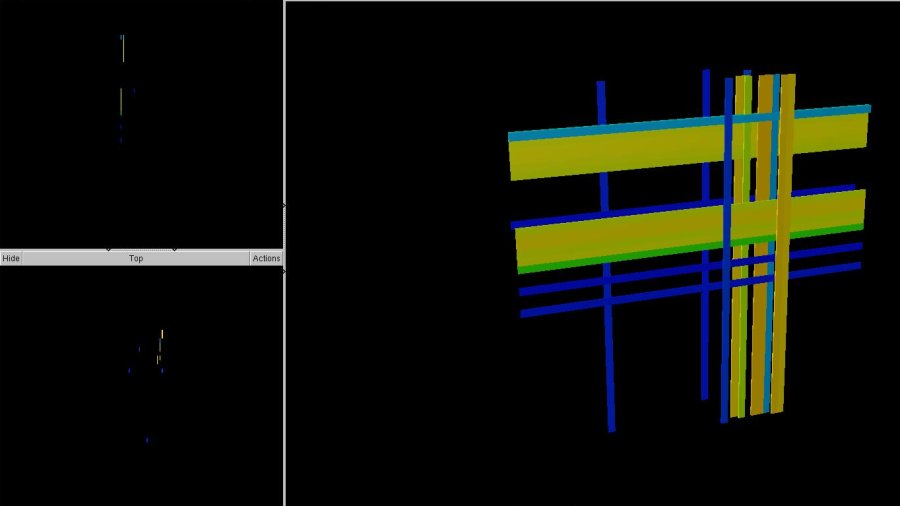
Low momentum beam
These are the real beam events. Typically they are not quite as clean as the simple events shown above.
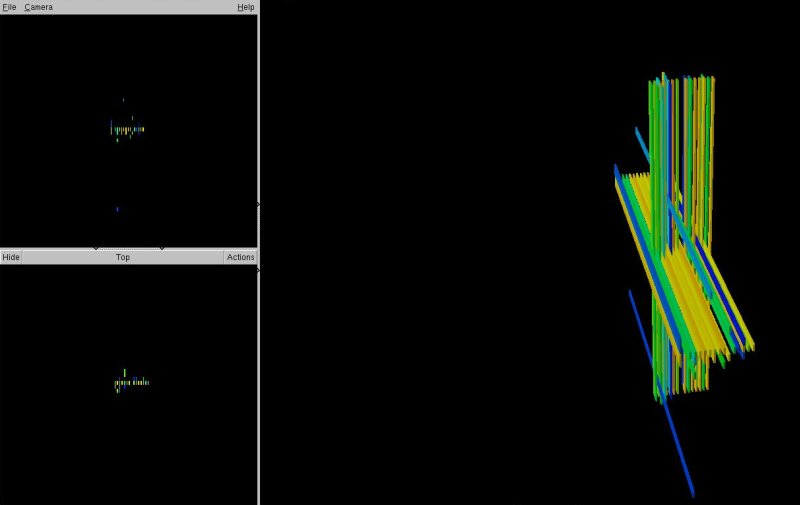
This event is still fairly straightforward but is not very track-like.
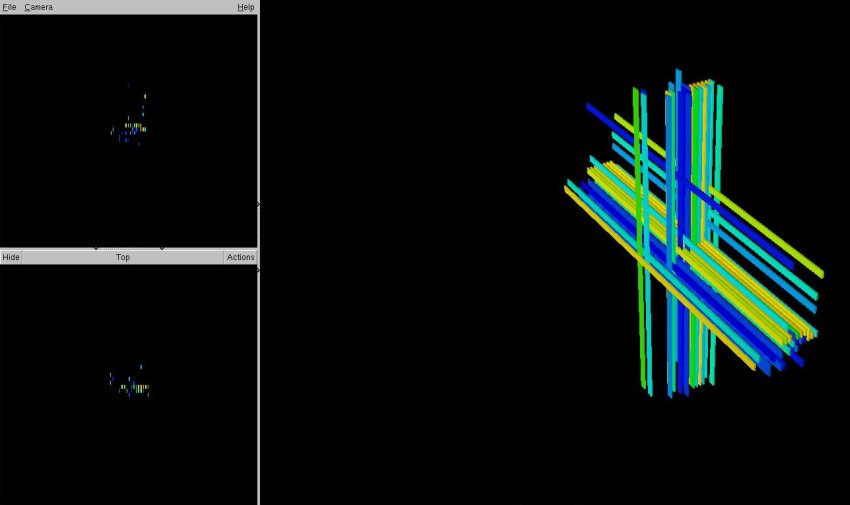
THis event is quite fun, although it is fairly 'tracky', it seems to include two hard scatters, which give the particle a sort of slight s-bend in the XZ view. BZ 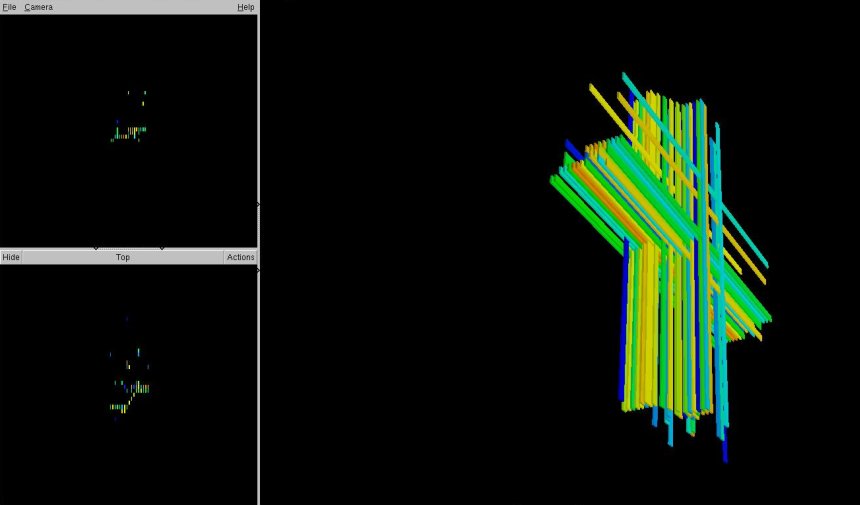
High momentum beam
Finally, for a bit of fun here are some high momentum particles this first is just a big shower. In the two 2D projections you can see some very nice particle 'fingers' extending out of the shower. This is quite nice and something you wouldn't see in Ingrid or even MINOS, because of the thicker iron plates. It would difficult, but perhaps not impossible, top match these up in 3D.
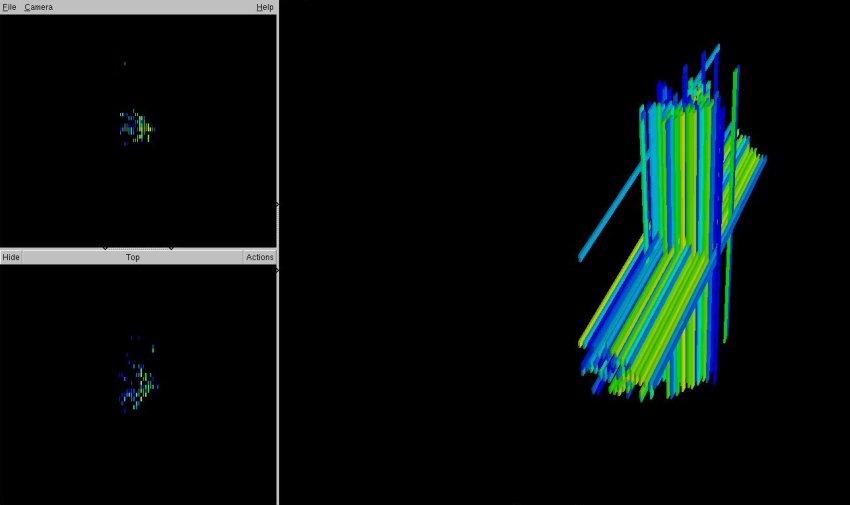
The second event shos something that is quite common. There is a mip in the top left hand corner, and a shower in the centre. In this case it is quite easy to identify the false matches, but sometimes that will not work. However we can usually use timing to eliminate these ambiguities.
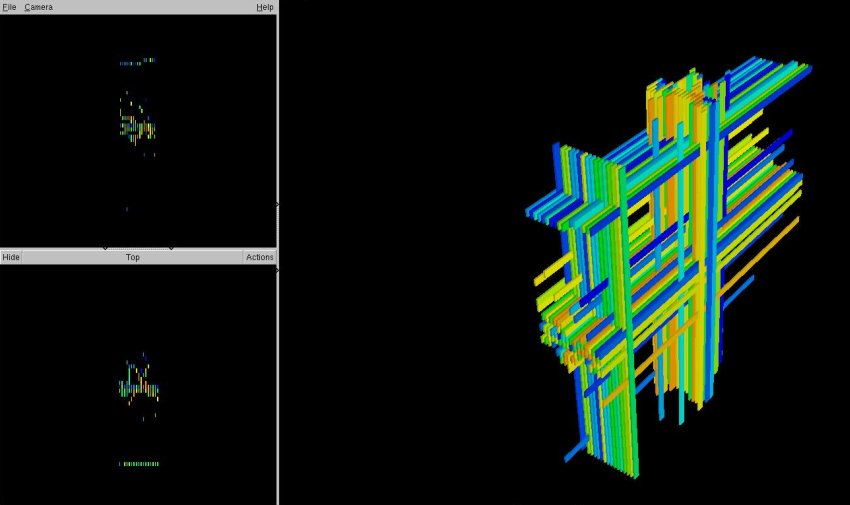
A more complex example using timing cuts
I am looking at event 8 from dsecal_00010114_0000.daq.mid
First with no cuts, the event looks a mess...
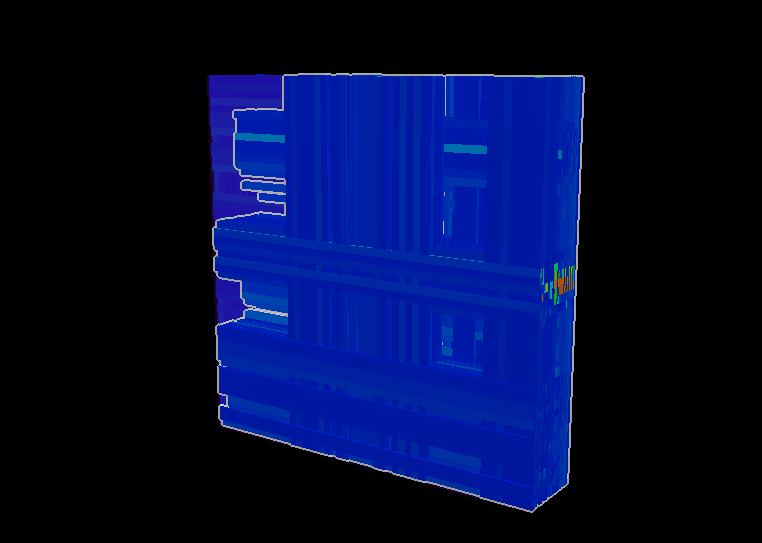
Now apply a charge threshold cut at 10 using the "Palette" slider control: "Eve tab">Event>TripT>ED00
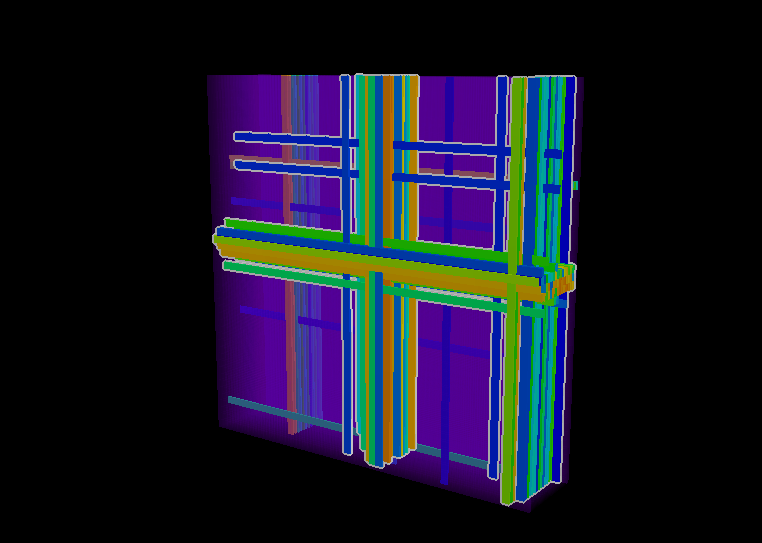
Still a mess because there are several overlapping events. Look at the timing hisrogram, the large spike at the left is from hits with bad timing information.
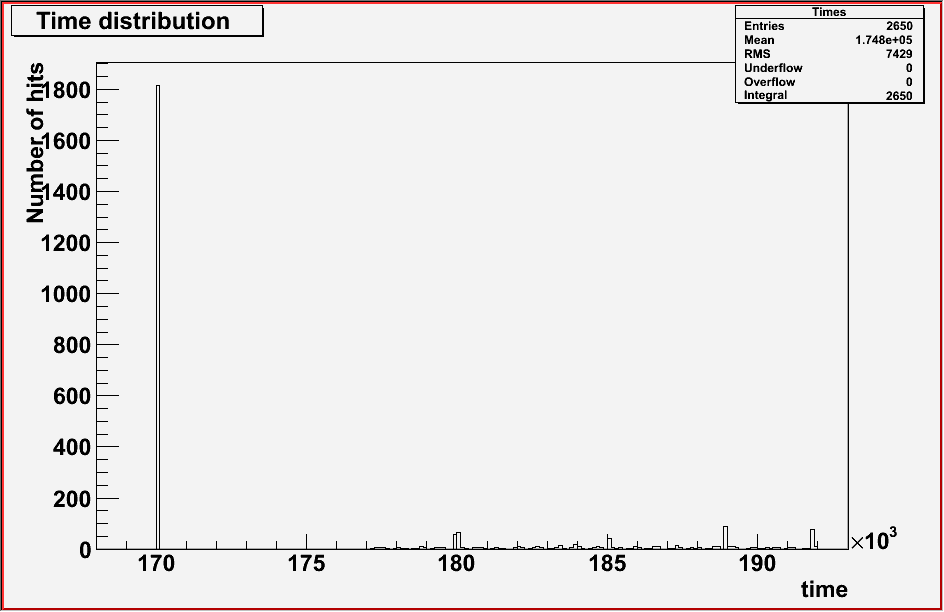
By selecting on the x axis, zoom in on the good timing information, now you can see the 23 buckets, and clearly see more activity in some of them.
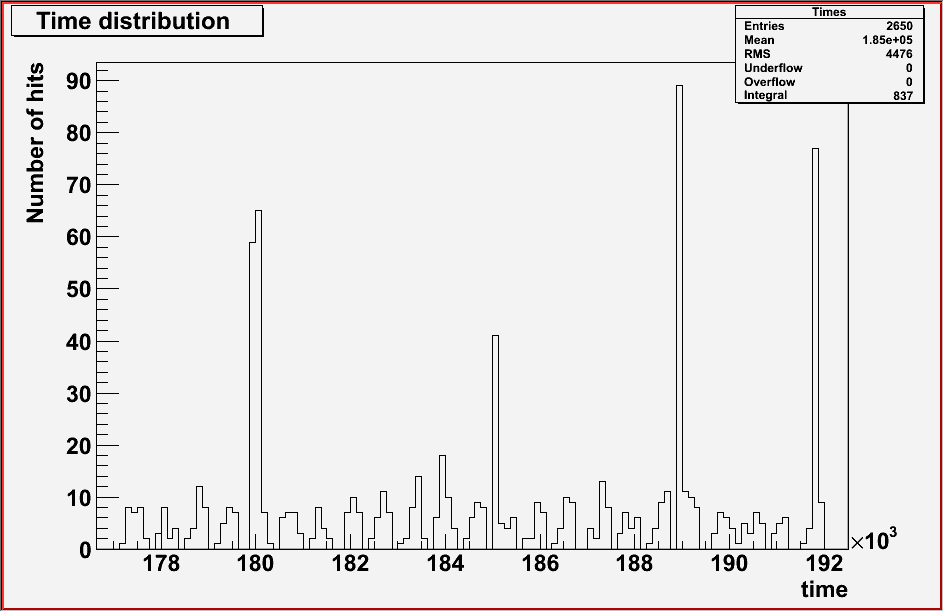
Zoom in again on just one bin.
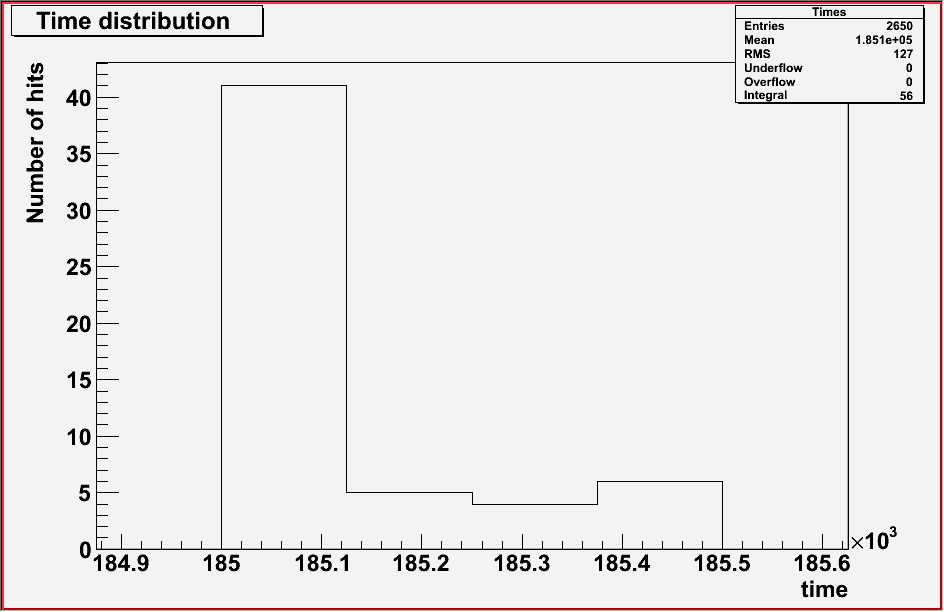
now apply this cut to the data: ND280 Event Control tab> (Timing Cuts) Apply
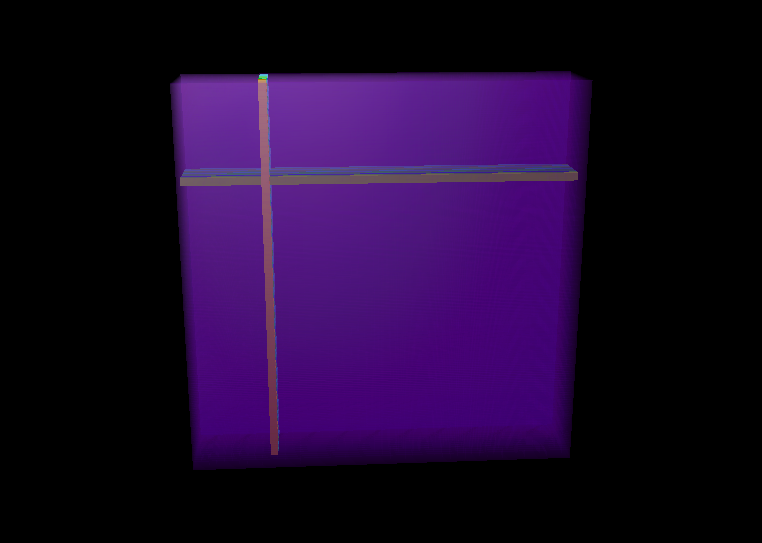
and one clean MIP is visible.
This final picture show a snapshot of the whole program running. I have swapped the 3D display and the Front display on the "Multiple Views" tab, turned off the display of all scintillator bars ( they are 97% transparent in the picturs above) and turned on the axis in the 3D display. Left as an exercise for the reader!
